Filter by
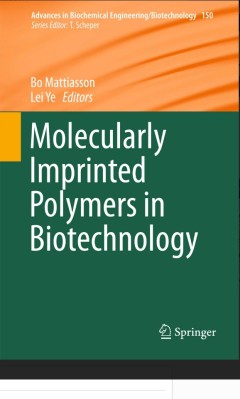
Molecularly Imprinted Polymers in Biotechnology
Controlled radical polymerization techniques for molecular imprinting, by Mark E. Byrne From bulk polymers to nanoparticles, by Lei Ye Post-imprinting and in-cavity functionalization, by Toshifumi Takeuchi Characterization of MIPs (affinity, selectivity, site heterogeneity…), by Richard Ansell Theoretical aspects and computer modelling, by Ian Nicholls MIPs in aqueous environments, by Bi…
- Edition
- 1
- ISBN/ISSN
- 978-3-319-20728-5
- Collation
- VIII, 231
- Series Title
- -
- Call Number
- -

Molecular Breeding for Sustainable Crop Improvement
The world population is estimated to reach to more than 10 billion by the year 2050. These projections pose a challenging situation for the agricultural scientists to increase crops productivity to meet the growing food demands. The unavailability and/or inaccessibility to appropriate gene pools with desired traits required to carry out genetic improvement of various crop species make th…
- Edition
- 1
- ISBN/ISSN
- 978-3-319-27088-3
- Collation
- XI, 478
- Series Title
- Sustainable Development and Biodiversity
- Call Number
- -
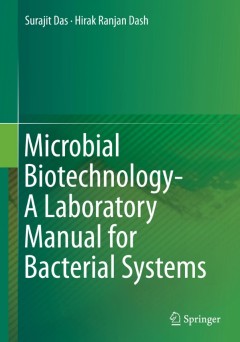
Microbial Biotechnology- A Laboratory Manual for Bacterial Systems
Microorganisms play an important role in the maintenance of the ecosystem structure and function. Bacteria constitute the major part of the microorganisms and possess tremendous potential in many important applications from environmental clean up to the drug discovery. Much advancement has been taken place in the field of research on bacterial systems. This book summarizes the experimental setu…
- Edition
- 1
- ISBN/ISSN
- 978-81-322-2094-7
- Collation
- XVI, 239
- Series Title
- -
- Call Number
- -

Metal Response in Cupriavidus metallidurans:Volume I: From Habitats to Genes …
This book is the first volume of a two-volume set summarizing 40 years of key research findings directly related to metal-resistant Cupriavidus/Ralstonia (Betaproteobacteria). In this first volume, the historical and geographical context of these bacteria, which are mostly found in industrial and polluted environments linked to zinc and other non-ferrous metallurgy, is sketched to illustrate th…
- Edition
- 1
- ISBN/ISSN
- 978-3-319-20593-9
- Collation
- IX, 89
- Series Title
- SpringerBriefs in Molecular Science
- Call Number
- -
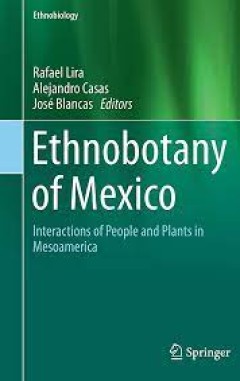
Ethnobotany of Mexico Interactions of People and Plants in Mesoamerica
This book reviews the history, current state of knowledge, and different research approaches and techniques of studies on interactions between humans and plants in an important area of agriculture and ongoing plant domestication: Mesoamerica. Leading scholars and key research groups in Mexico discuss essential topics as well as contributions from international research groups that have conduct…
- Edition
- -
- ISBN/ISSN
- 978-1-4614-6669-7
- Collation
- 21 b/w illustrations, 71 illustrations in colour
- Series Title
- -
- Call Number
- -
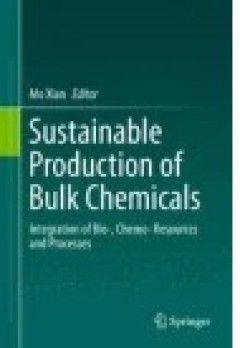
Sustainable Production of Bulk Chemicals
The book describes in detail the authors’ current understanding of the models that incorporate the concepts and techniques of synthetic chemistry, chemical engineering, synthetic biology and bioengineering. These include chemical engineering methods for green chemical production from sustainable bio-resources; using synthetic chemistry and kinetics of chemical reaction concepts in the constru…
- Edition
- -
- ISBN/ISSN
- 978-94-017-7475-8
- Collation
- VII, 154
- Series Title
- -
- Call Number
- -

Toward Sustainable Operations of Supply Chain and Logistics Systems
This book addresses critical issues in today’s logistics operations and supply chain management, with a special focus on sustainability. In dedicated chapters the authors address aspects concerning multimode logistics operations, reverse network configuration, forward and reverse supply chain integration, improvement of the production operations and management of the recovery activities, as w…
- Edition
- 1
- ISBN/ISSN
- 978-3-319-19005-1
- Collation
- XI, 550
- Series Title
- EcoProduction
- Call Number
- -
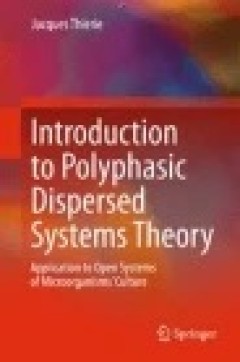
Introduction to Polyphasic Dispersed Systems Theory: Application to Open Syst…
This book introduces a new paradigm in system description and modelling. The author shows the theoretical and practical successes of his approach, which involves replacing a traditional uniform description with a polyphasic description. This change of perspective reveals new fluxes that are cryptic in the classical description. Several case studies are given in this book, which is of interest o…
- Edition
- -
- ISBN/ISSN
- 978-3-319-27853-7
- Collation
- -
- Series Title
- -
- Call Number
- -
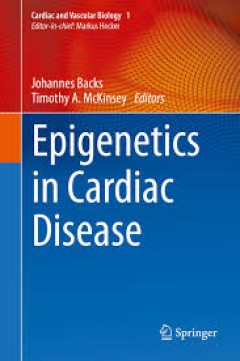
Epigenetics in Cardiac Disease
This book describes important advances in our understanding of how environmental conditions affect cardiac gene expression through epigenetic mechanisms. Further, it discusses the roles of chromatin modifications (in particular DNA methylation and histone modifications) and of chromatin regulators in the context of cardiac diseases. The book provides readers with an overview of our current unde…
- Edition
- -
- ISBN/ISSN
- 978-3-319-41457-7
- Collation
- 10 b/w illustrations, 24 illustrations in colour
- Series Title
- -
- Call Number
- -

Subalternity vs. Hegemony, Cuba's Outstanding Achievements in Science and Bio…
The present book introduces an original (new) perspective on Cuba. This book revisits Cuba's choice, after the 1959 revolution, to develop an advanced healthcare and scientific system. It also introduces new aspects of the problem development/underdevelopment. From the start, every effort of the Cuban leadership and scientific community was driven by the primary purpose of meeting the country�…
- Edition
- -
- ISBN/ISSN
- 978-3-319-40609-1
- Collation
- XII, 103
- Series Title
- SpringerBriefs in History of Science and Technology
- Call Number
- -
 Computer Science, Information & General Works
Computer Science, Information & General Works  Philosophy & Psychology
Philosophy & Psychology  Religion
Religion  Social Sciences
Social Sciences  Language
Language  Pure Science
Pure Science  Applied Sciences
Applied Sciences  Art & Recreation
Art & Recreation  Literature
Literature  History & Geography
History & Geography